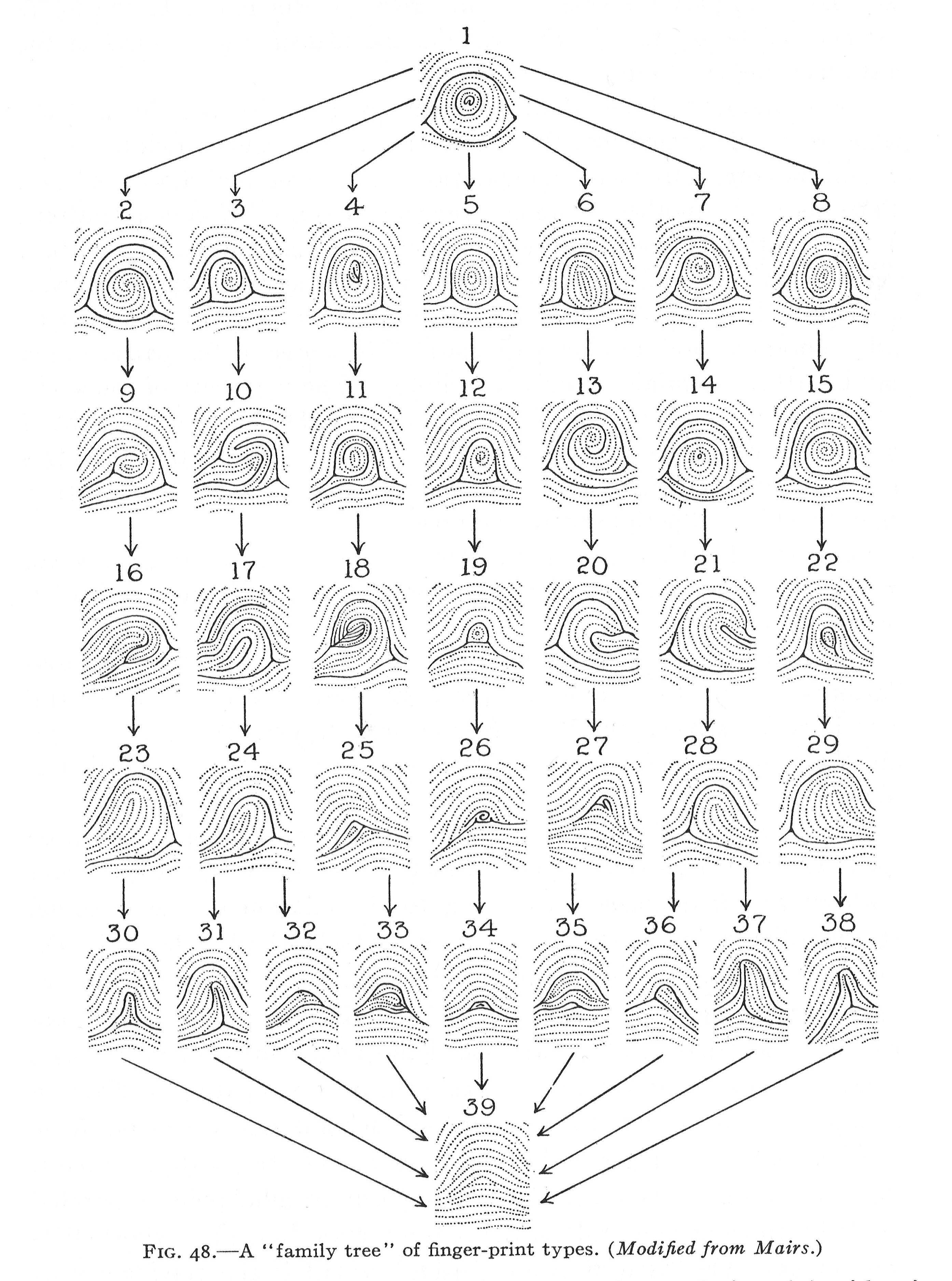Peer-reviewed publications associated with this project – most of which are available free-of-charge – are listed below:
Daniel Asen. “Knowing Individuals: Fingerprinting, Policing, and the Limits of Professionalization in 1920s Beijing.” Modern China 46, no. 2 (2020): 161-192. Link
Daniel Asen. “Fingerprints and Paternity Testing: A Study of Genetics and Probability in Pre-DNA Forensic Science.” Law, Probability and Risk 18, nos. 2-3 (2019): 177-199. Link
Daniel Asen, “Secrets in fingerprints: clinical ambitions and uncertainty in dermatoglyphics.” CMAJ 190, no. 19 (2018): E597-E599. Link
Daniel Asen. “‘Dermatoglyphics’ and Race after the Second World War: The View from East Asia.” In Global Transformations in the Life Sciences, 1945–1980, edited by Patrick Manning and Mat Savelli, 61-77. University of Pittsburgh Press, 2018. Publisher website
Image: Harold Cummins and Charles Midlo. Finger Prints, Palms and Soles: An Introduction to Dermatoglyphics. New York: Dover Publications, 1961, 62. Used with permission. Image courtesy of Dover Publications.


